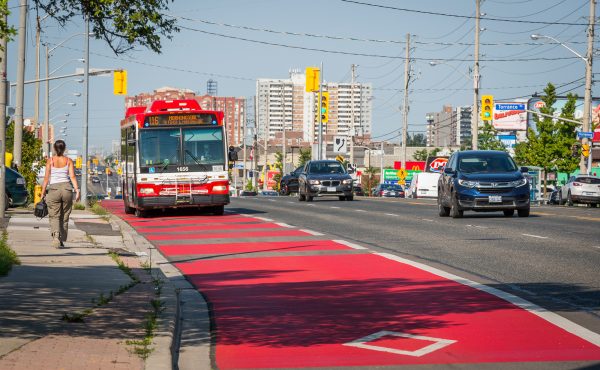
The expansion of the Rack It and Rocket Program is expected to move forward following a TTC meeting this afternoon.
The one-year pilot project was launched in June 2005 and extended through the summer of 2006 on seven bus routes.
A TTC project report on the pilot showed that the racks have been popular with both cyclists and non-cyclists, produced a few new TTC riders, and do not slow down bus timetables.
TTC staff recommended the program not be expanded to the rest of the system due to low usage levels. However, Councillor Adam Giambrone (Ward 18, Davenport) said the program will definitely go forward following today’s meeting.
Giambrone, who is vice-chair of the TTC and chair of the Toronto Cycling Committee, explained that more people will use the bike racks once they become a familiar and dependable feature on every new bus.
The City will buy between 500 to 600 buses in the next two to three years, he said.
Giambrone also noted that money is not an issue. “The racks are relatively cheap, at $1,000 to $2,000, including labour and repair costs, compared to the approximately $500,000 to $750,000 that each bus costs.”
Most other major transit systems in North America have bike racks on their buses.
According to Giambrone, cyclists can also expect to see “hundreds of new bike lockers” in Toronto next year, and that this program, combined with the Rack it and Rocket program, will put Toronto far ahead of other Canadian cities in the arena of cycling infrastructure.
The widely-cited 1999 City of Toronto Report on Cycling states there are approximately 939,000 residents (48 per cent) over the age of 15 who cycle in the city. Of those, approximately 388,000 are so-called “utilitarian cyclists” — those who ride to get to work and school, for example.
Making biking and transit an option for every trip a Torontonian takes will make more TTC riders out of cyclists.
Now, what about those bike lanes?



